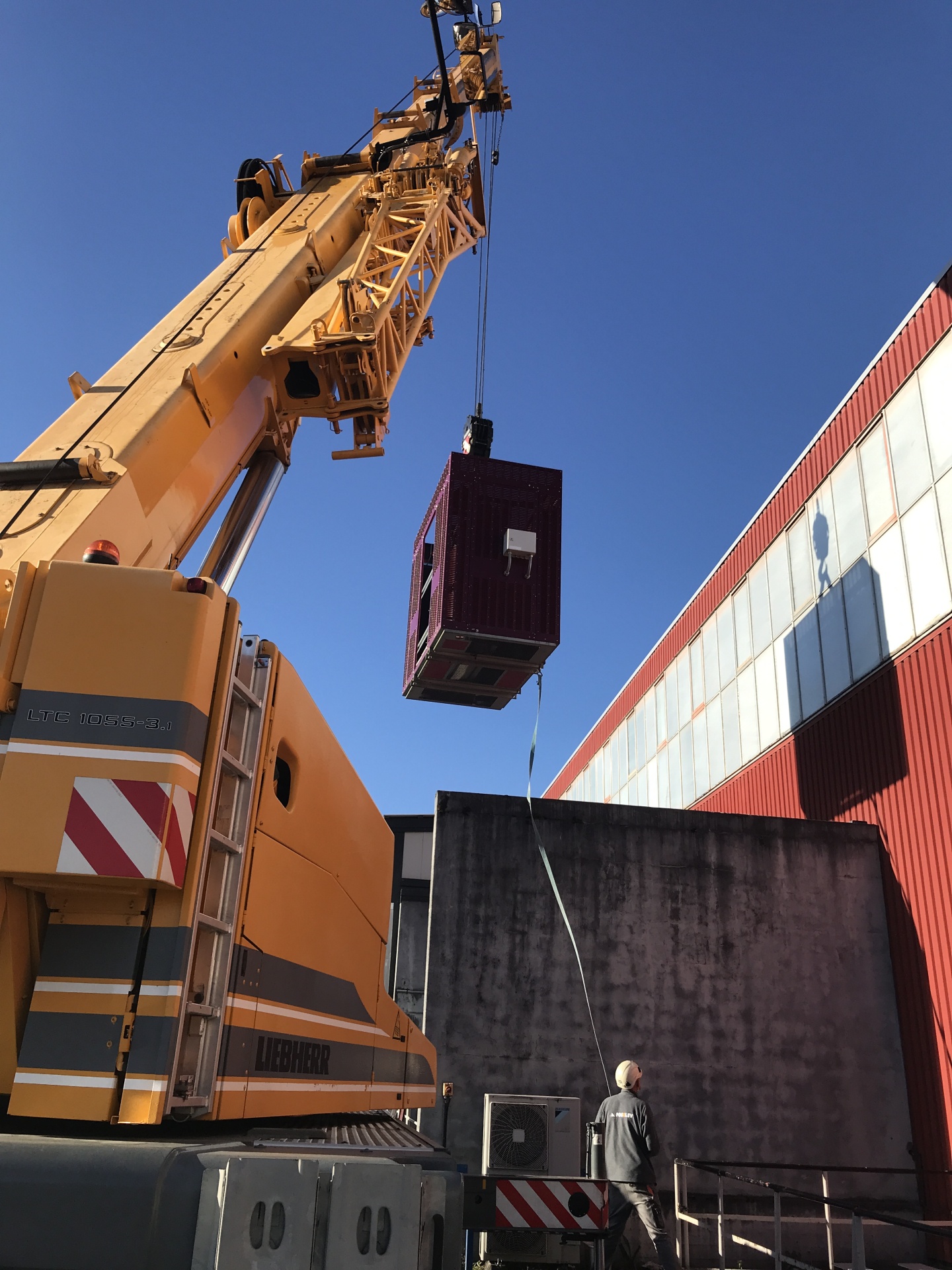Environmental compliance and management of hazardous substances
CERN Environment Report 2021-2022
As an intergovernmental organisation CERN benefits from privileges and immunities as required for its functioning, including the right to establish its own regulations. These regulations apply on its site and replace national laws. However, CERN strives to ensure continued compliance with its Host States’ legal frameworks. To keep the environmental impact of its existing and planned activities as low as possible, the Occupational Health and Safety and Environmental Protection unit carries out an environmental monitoring programme that includes both radiological and physicochemical parameters.
PREVENTING CONVENTIONAL ENVIRONMENTAL ACCIDENTS
CERN has put procedures and monitoring in place to avoid accidental chemical releases. In compliance with CERN’s Safety Policy, CERN's departments are responsible for putting in place adequate measures for preventing environmental accidents and following up on all environmental events and near misses, as well as the related remedial actions.
CERN has defined a clear framework for classifying events according to their potential impact. It has also implemented a robust procedure for communication and follow-up with the local authorities.
During the period covered by this report, no conventional pollution event occurred that would have led to a fine or other sanction.
PREVENTING RADIOLOGICAL ENVIRONMENTAL ACCIDENTS
CERN has robust radiation safety and radiation protection rules in place (see Ionising radiation). No environmental radiological accident has ever occurred on the CERN sites.
MANAGING HAZARDOUS SUBSTANCES
CERN has a regulatory framework in place that governs the use of hazardous substances with the potential to cause soil and water pollution. This framework is continuously adapted in line with the evolution of the Host States’ regulations, and hazardous substances are subject to regular monitoring and reporting. The internal and external transport of hazardous substances is also subject to strict regulations and monitoring. Specifically, the transport of hazardous material using public roads must comply with ADR regulations (European Agreement concerning the International Carriage of Dangerous Goods by Road).
Monitoring is facilitated by dedicated tools, which have been developed in-house to meet CERN’s specific needs. The CERN Chemical Register for Environment, Health and Safety (CERES), the inventory tool for liquid, solid and gaseous chemicals present on CERN’s sites, was created in 2020. Users of hazardous substances continuously update the register, which distinguishes standard chemicals from those that meet pre-defined criteria to be considered as “high risk” for the environment. By the end of 2022, a total of more than 4000 items were registered in CERES, a quarter of which were considered as high risk. This inventory is the basis on which departments carry out their in-depth periodic reviews and update the mitigation measures to be implemented. Since 2022, in the spirit of knowledge and technology transfer, CERN has made CERES available as an open source tool.
The CERN PoLiChem (Prevention of Pollution by Liquid Chemical Agents) working group identified the replacement of oil transformers by dry ones as a priority action in 2018. This project targets more than 100 units over a period of 10 years. The programme began in 2021, with 10% of the transformers replaced in the period (see In focus below).
Radioactive material represents a distinct category of hazardous substances. Its use and transport are subject to dedicated rules. Any radioactive material at CERN is controlled and traced throughout its life cycle, and radiological risk assessments are performed before it is handled. A comprehensive radiation protection training programme is in place to allow the users to assess radiological risks and apply the related radiation protection rules and procedures.
In focus
Vincent Chareyre leads the Electrical Network Maintenance section in the Electrical group of the Engineering department (EN-EL) and Valérie Montabonnet leads the Electrical Power Converters group in the Systems department (SY-EPC). Both are involved in the programme to replace oil-filled transformers.

— What concrete actions have been taken?
VC: This project is divided into two parts, one overseen by us in EN-EL, which deals with power distribution transformers, and the other by SY-EPC, which deals with power transformers for converters. In EN-EL, we started at the beginning of 2021 with 134 oil-filled transformers that had been identified either for replacement or for elimination, whenever possible, as part of the optimisation and consolidation of the electrical network. Of the 134 transformers, 103 are in operation today. The rest are spare units used in the event of a major failure. By the end of 2022, we had replaced ten units and eliminated two, which also allowed us to eliminate 13.6 tonnes of mineral oil.
— What are the challenges associated with this project?
VC: Each transformer and its installation are unique and is thus treated as a separate project. Each project involves very specific processes and requires timely coordination to minimise the impact on the end-users while the process of swapping the electric power supply of the downstream installations from the old to the new transformer is under way.
— Valérie, what actions has SY-EPC been able to take?
VM: The transformers that our group deals with have different requirements to those of EN-EL; the challenges are of a more complex nature and require a careful design phase so that each transformer meets the specifications. The design studies have begun, as has the investigation of existing oil leaks and non-compliant oil retention pits. Oil transformers that are no longer in use have been disposed of or recycled. We eliminated 42 tonnes of mineral oil in 2022 and will pursue the replacement and consolidation programme during the next technical stops and long shutdowns.
Learn more
Questions regarding this report may be addressed to environment.report@cern.ch.
